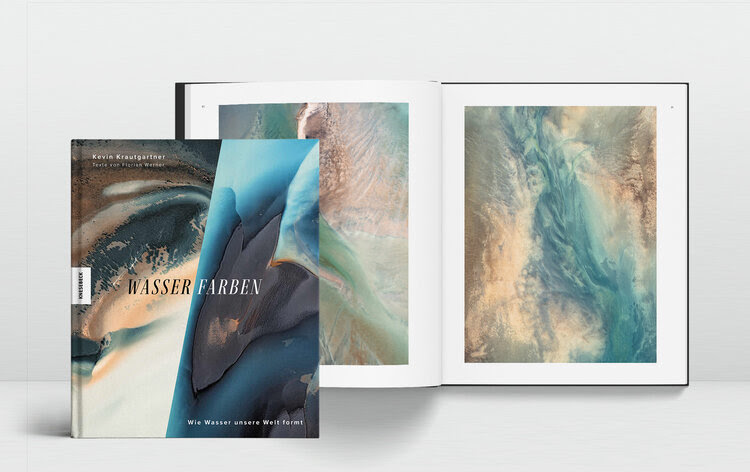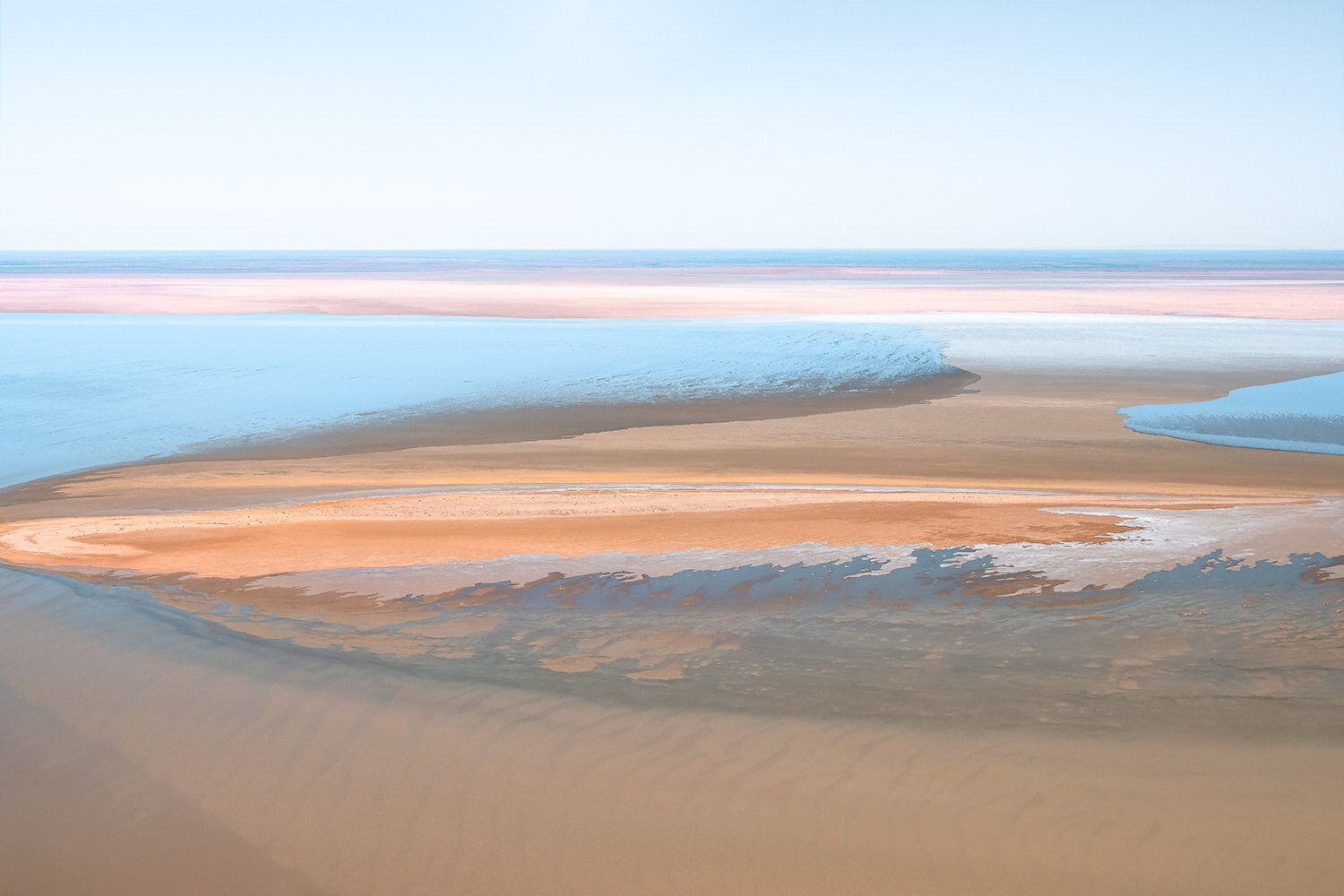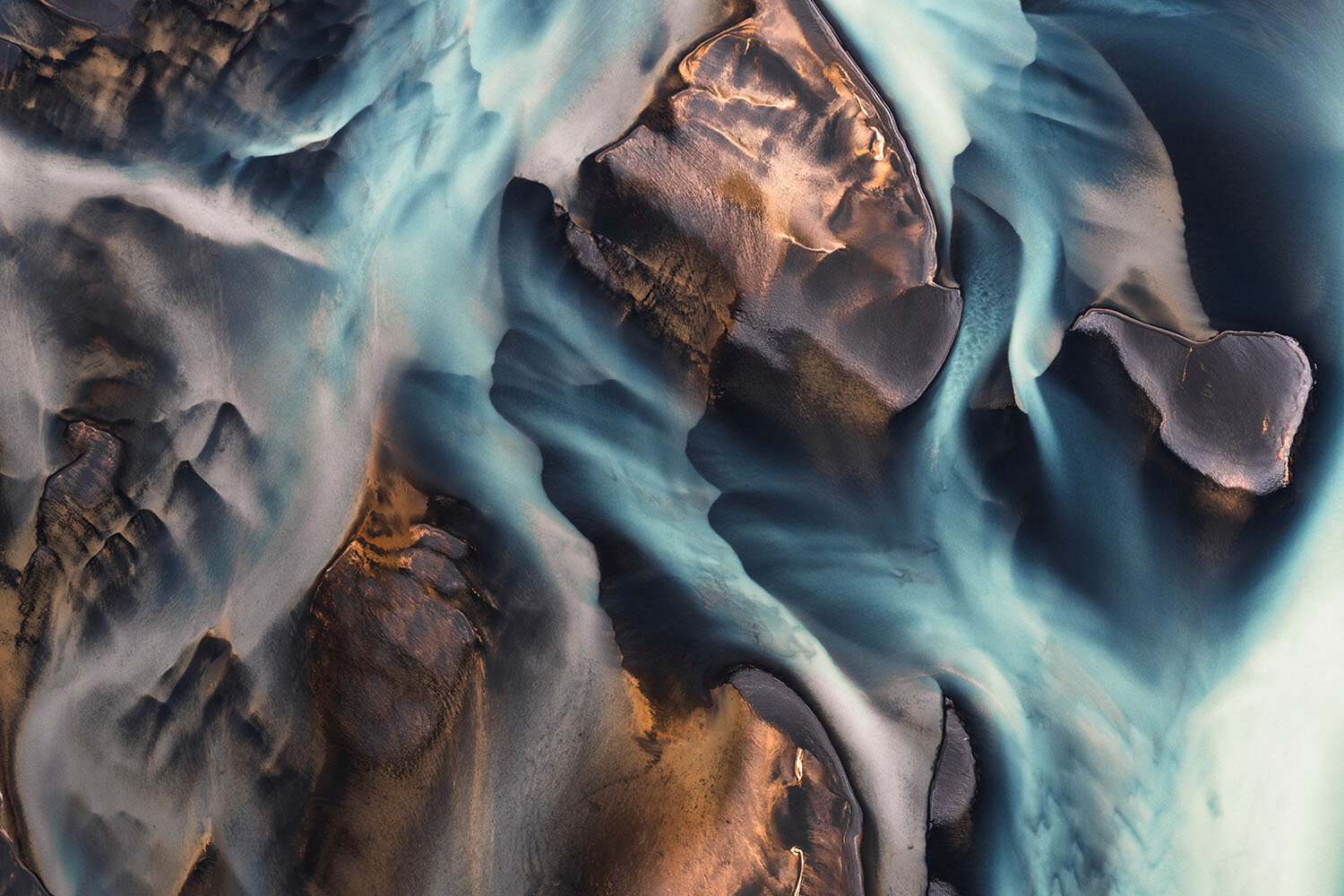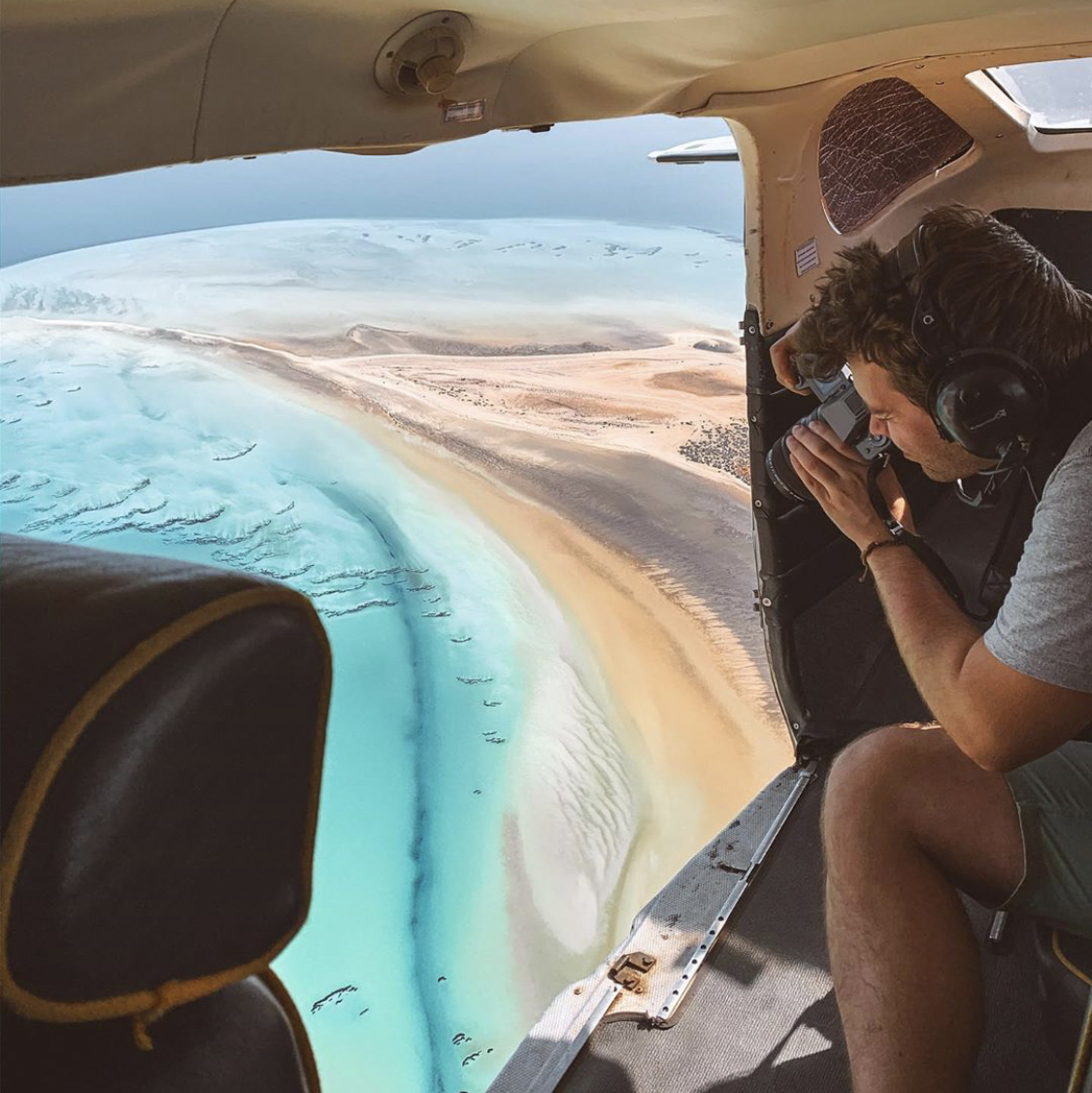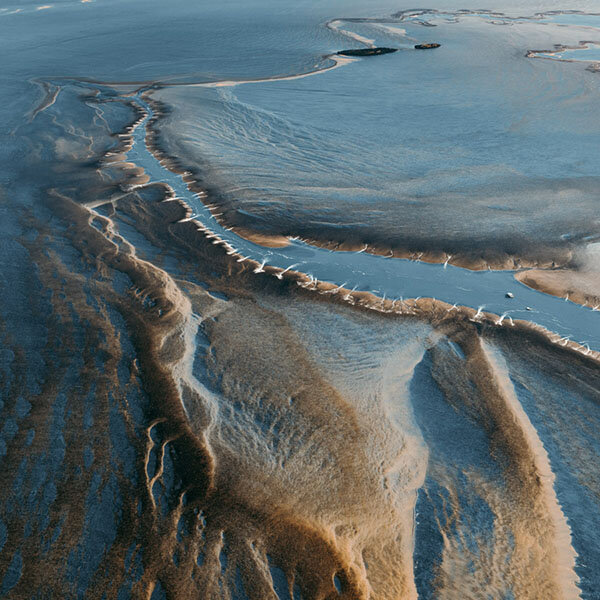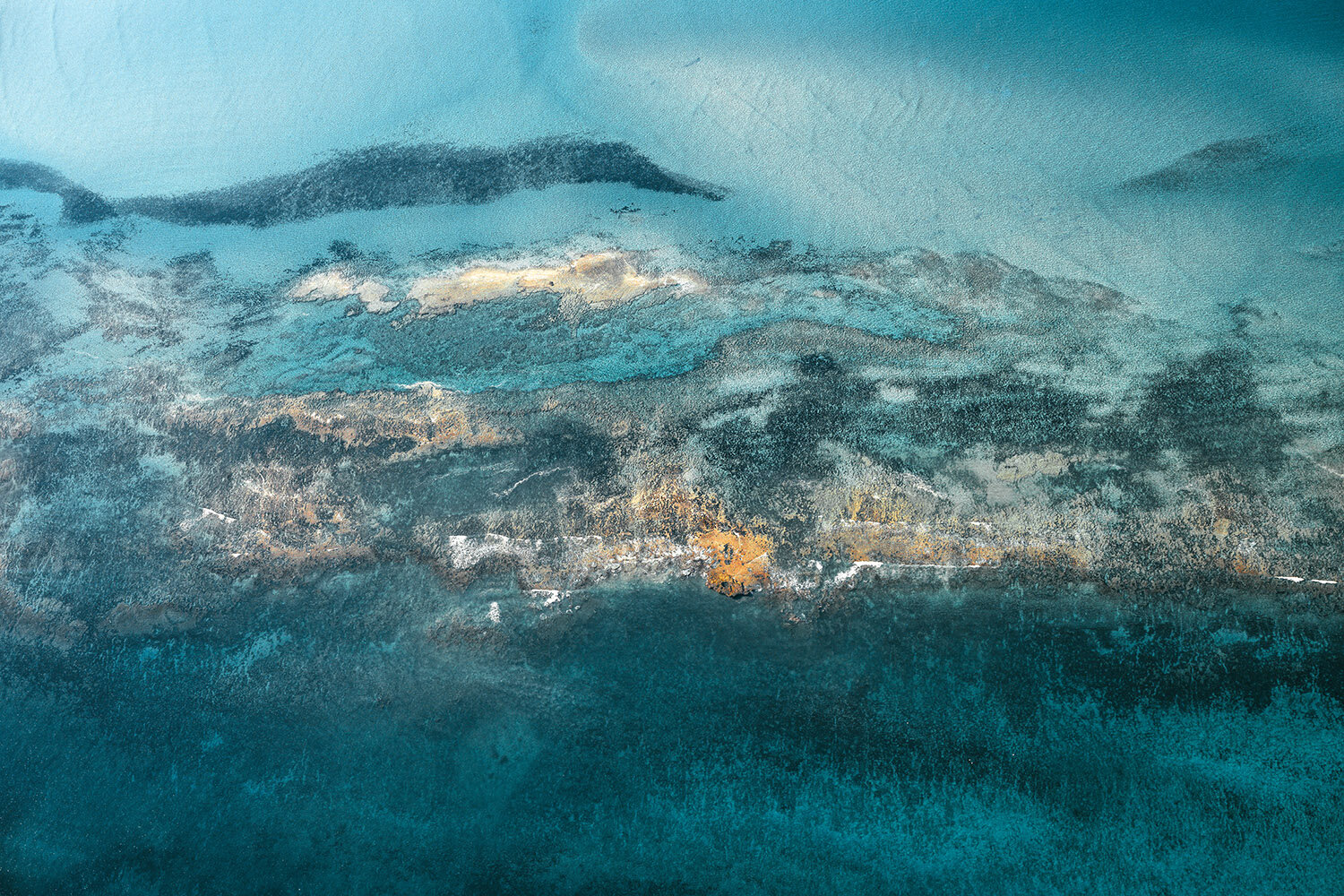
A brilliant series offering brief glimpses into the minds and creative processes of some of the industry's most interesting or celebrated creatives. A new perspective is featured on the first Tuesday of each month at 10 AM EST.

Kevin Krautgartner: Walking On Water
By Alixandra Rutnik on Oct 04, 2021
YG17 Winner debuts stunning aerial photography book
Our industry is filled with talented photographers who can capture absolutely breathtaking landscape shots... but what about the other 70% of the surface of the earth? Enter Young Guns 17 winner Kevin Krautgartner, an incredible aerial photographer based in Germany who has specialized in truly unique images of oceans, coastlines, salt ponds and other bodies of water. This has culminated in the release of his very first book, WATER.COLORS, which is currently available for pre-order.
With the Young Guns 19 party on the horizon — be sure to buy your tickets today for November 17 — we talked to Kevin to hear the latest on his debut photo book and get to know more about him as an aerial artist and as a member of the Young Guns family.
Let’s talk about your debut photography book! WATER.COLORS - How water shapes the earth - holds 160 of your stunning photographs. How did this book project begin?

I have been fascinated by water landscapes for a very long time. I have dedicated myself to aerial photography and almost exclusively documenting landscapes "formed" by water. Often these landscapes are created by nature, but sometimes they are influenced by humanity.
Over the last few years, I have created an extensive portfolio of aerial works dedicated to the theme, colors, and shapes of water. The German book publisher Knesebeck approached me about making a book of my art. It has always been a dream and a long-time goal to compile many of my projects into one big photography book. Since my work depicts water in all imaginable colors, the title Water.Colors was very appropriate.
Usually, one does not directly associate water with many colors, which makes it all the more exciting to discover the colorful works in the book. The text in the book is written by a well-known German writer. He describes water historically and fundamentally, so international people interested in my work will not be disappointed if they cannot read the text. This book invites you to discover unique landscapes from an atypical point of view, and I hope it shows water in a unique and fragile nature.
"This book invites you to discover unique landscapes from an atypical point of view, and I hope it shows water in a unique and fragile nature."
What is a day-in-the-life like for you?
For my projects, meticulous planning is the most important thing. I research satellite images and organize the details in advance. Depending on the project, various environmental conditions must fit together: weather, wind, tides, sun position, etc. I book helicopters and small planes for my photoshoots, which are very expensive, so everything has to align on the day of the shoot.
"Depending on the project, various environmental conditions must fit together: weather, wind, tides, sun position, etc. I book helicopters and small planes for my photoshoots, which are very expensive, so everything has to align on the day of the shoot."
An aerial shoot in a helicopter usually takes between 1.5 and 5 hours, depending on the distance to the location. Since I often photograph remote landscapes, sometimes I have to fly for 2 hours first to get to the specific place.
In the air, I remove the doors to achieve the perfect angle. It is not uncommon that I take over 1000 photos during a flight because everything has to happen quickly, and I don't have time to check whether the camera’s crop or focus is perfect.
However, it is not possible to use a helicopter or a plane for every project. Depending on the altitude and location, sometimes I decide to use drones, which I try to avoid because of the lower image quality. Ultimately, I choose my equipment according to the requirements of the shooting. These are all just "tools," and essentially, what counts is the idea of the project.
What is your photo process?
My focus is to create vast prints of my work. The richness of detail in the aerial images only comes into its own in large formats. I am currently working with a medium format camera with 100 megapixels. This camera allows me to extract individual sections on specific photos, which is helpful.
Post-processing my work is also an essential part of my job. Over the years, I have developed a look characterized by slight color and light and shadow adjustments. I avoid adding or removing elements from the image. And because of this, post-processing doesn't take me forever. I edit the photos and then edit them again days or weeks later to get some distance from my work.
You must have a crazy story or two about an aerial shoot! Have you photographed while sky diving?
Unfortunately, I have never jumped with a parachute, but I imagine it is not easy to take good photos in free fall and with a helmet on your head – but maybe I'm wrong.
One of my most unique experiences in the air was a flight over the Icelandic highlands. To see this incredible landscape from the air is incomparable. The highlight was landing on a lava field in the middle of nowhere. It was such a surreal experience that I can’t compare to anything else!
You capture the beauty, but what about the ugly? Do you ever fly over wastelands?
I primarily generate my income from the sales of my prints; therefore, I am attuned to what my customers find exciting. Landscapes that seem rather daunting are certainly fun to look at, but they are somewhat tricky as prints. I am more fascinated by the artwork created by nature.
I am also drawn to places that inspire me positively. I encourage a sense of reflection in my work because even the most beautiful coral reefs or glacier rivers are now threatened by climate change. I also photograph controversial landscapes, like the Bauxite mines in Western Australia, which are included in the book.
What made you pick up a camera instead of a paintbrush or a mound of clay?
Creative works of any kind have always fascinated me. As a child, I painted a lot and photographed very early on – at that time it was still analog.
In addition to photography, I studied graphic design. That's why in aerial photography, I'm particularly fascinated by shapes, colors, and textures.
I started out photographing minimalist architecture, which I still do today, but what bothers me a bit about this style is that the variety of buildings is limited.
There are so many new things to discover in aerial photography because of the atypical angle and nature’s constant state of change. There are places I have photographed several times, and they always look different. It fulfills me when my photos can show something relatively unknown but very aesthetic– worlds that often remain hidden to us although they surround us daily.
"There are so many new things to discover in aerial photography because of the atypical angle and nature’s constant state of change."
What do you consider to be the most exciting and rewarding part of your job?
I love to capture landscapes that are unknown to us from an aerial angle. I love to reveal our extraordinary, diverse, and impressive nature. Through my art, I hope to awaken people to the parts of the world that we need to protect. The more I travel, the more I am fascinated by nature, and we should all take a little more time to admire it.
"Through my art, I hope to awaken people to the parts of the world that we need to protect."
My best project is definitely the "Beneath the Surface" series. It exposes the fragile tropical coral reef systems from the air at low tide. As far as I know, most places have never been photographed before. I also wanted to give this natural wonder extensive exposure because most coral reefs on our planet are in extreme danger. With the rise of water temperature due to global warming, many coral reefs are bleaching and dying. These unique ecosystems are so impressive, and we need to report more about them to stimulate action.
Since you are part of the winning class of YG17, how do you find this competition beneficial for people 30 years of age or younger?
Winning this award was a thrilling experience! Not only because I was able to visit New York for the first time, but also I enjoyed a unique award ceremony. I made new acquaintances and built up a solid network with first-class artists. The support from The One Club will last forever, and the worldwide recognized Young Guns title helps a lot to market and present yourself. So I recommend anyone 30 years of age and younger to participate in this competition.
"The One Club will last forever, and the worldwide recognized Young Guns title helps a lot to market and present yourself."
One Club for Creativity Members get featured here on the One Club website and across our social media channels. Have a new project you'd love to share? An upcoming exhibition and you'd like us to help spread the word? Drop us a line at membernews@oneclub.org. We always love to know what our One Club Members have been up to, so don’t forget to send us your cool work!
Related
